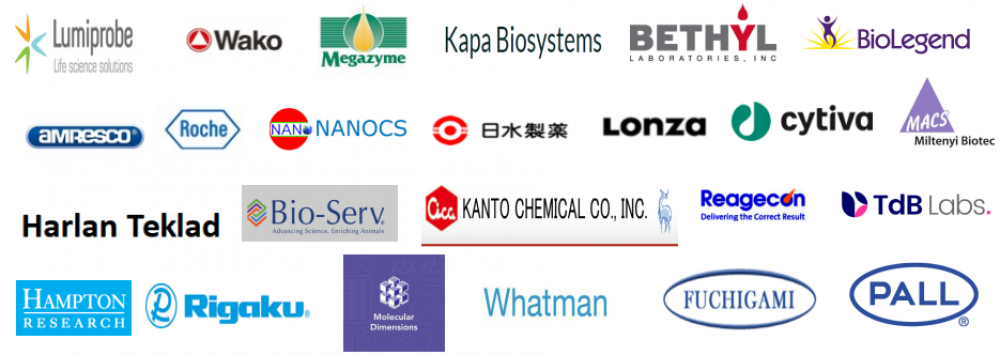Oxoid CM0129B Oxoid胰蛋白胨大豆肉汤(TSB)培养基中文说明书
Dehydrated Culture Media
TRYPTONE SOYA BROTH (Casein soya bean digest medium) EP/USP/JP/BP
Code: CM0129
a highly nutritious general purpose medium for the growth of bacteria and fungi
一种用于细菌和真菌生长的高营养通用培养基
| Formula |
gm/litre |
| Pancreatic digest of casein |
17.0 |
| Enzymatic digest of soya bean* |
3.0 |
| Sodium chloride |
5.0 |
| Dipotassium hydrogen phosphate |
2.5 |
| Glucose |
2.5 |
| pH 7.3 ± 0.2 @ 25°C |
*Contains papain
Directions
Add 30g to 1 litre of water (purified as required), mix well and distribute into final containers. Sterilise by autoclaving at 121°C for 15 minutes.
Description
A highly nutritious versatile medium which is recommended for general laboratory use. Due to the inclusion of both Tryptone and Soya Peptone, the medium will support a luxuriant growth of many fastidious organisms without the addition of serum, etc.
Tryptone Soya Broth conforms to formulations detailed in various international pharmacopoeias1,4,5,6 .
方向
将 30 克加入 1 升水(根据需要进行净化),充分混合并分配到最终容器中。 通过在 121°C 高压灭菌 15 分钟进行灭菌。
描述
一种营养丰富的多功能培养基,推荐用于一般实验室。 由于同时包含胰蛋白胨和大豆蛋白胨,培养基将支持许多挑剔的生物体繁茂生长,而无需添加血清等。
胰蛋白胨大豆肉汤符合各种国际药典 1、4、5、6 中详述的配方。
Technique
Aerobic Cultivation
Tryptone Soya Broth may be used for the cultivation of aerobes and facultative anaerobes, including some fungi. Cultures should be examined at frequent intervals, as maximum growth is reached earlier than with less nutritious media and the phase of decline consequently begins sooner.
Anaerobic Cultivation
The addition of a small amount of agar renders the broth suitable for the cultivation of obligatory anaerobes, such as Clostridium spp.. For this purpose, the broth (with added agar) should be used soon after sterilisation, or, heated and cooled just before inoculation.
Blood Culture
The superior growth-promoting properties of Tryptone Soya Broth make it especially useful for the isolation of organisms from blood or other body fluids. Anticoagulants such as `liquid’† (sodium polyanethyl sulphonate) or sodium citrate may be added to the broth prior to sterilisation. Five to 10ml of blood may be added to 50ml of medium.
Tryptone Soya Broth is especially suitable for the tube dilution method of antibiotic susceptibility testing.
Oxoid laboratory tests have shown that Tryptone Soya Broth has a greater ability to resuscitate heated spores of Geobacillus stearothermophilus than Dextrose Tryptone Broth. Tryptone Soya Broth is recommended in the USP (Casein soya bean digest broth) for the recovery of organisms after sterilisation processes1. A positive result is revealed after 24-48 hours incubation at 55°C, by a heavy growth of organisms causing turbidity in the broth.
† Roche Products Ltd. Welwyn Garden City, Herts.
Selective Culture Media
Tryptone Soya Broth is used in food bacteriology as the basal medium to which a variety selective agents are added for selective enrichment of Staphylococcus aureus2 and Escherichia coli O1573.
技术
好氧培养
胰蛋白胨大豆肉汤可用于培养需氧菌和兼性厌氧菌,包括一些真菌。应经常检查培养物,因为最大生长比营养较少的培养基更早达到,因此下降阶段开始得更快。
厌氧培养
添加少量琼脂使肉汤适合培养强制性厌氧菌,如梭菌属。为此,肉汤(添加琼脂)应在灭菌后立即使用,或者在灭菌前加热和冷却接种。
血培养
胰蛋白胨大豆肉汤卓越的生长促进特性使其特别适用于从血液或其他体液中分离生物体。在灭菌前,可以在肉汤中添加抗凝剂,如“液体”†(聚苯乙基磺酸钠)或柠檬酸钠。 5 至 10 毫升的血液可添加到 50 毫升的培养基中。
胰蛋白胨大豆肉汤特别适用于抗生素药敏试验的试管稀释法。
Oxoid 实验室测试表明,胰蛋白胨大豆肉汤比葡萄糖胰蛋白胨肉汤具有更强的复苏嗜热脂肪地芽孢杆菌加热孢子的能力。 USP(酪蛋白大豆消化肉汤)推荐胰蛋白胨大豆肉汤用于灭菌过程后微生物的回收1。在 55°C 下孵育 24-48 小时后显示阳性结果,微生物大量生长导致肉汤浑浊。
† 罗氏产品有限公司,赫茨韦林花园城。
选择性培养基
胰蛋白胨大豆肉汤在食品细菌学中用作基础培养基,其中添加了多种选择性试剂,用于选择性富集金黄色葡萄球菌 2 和大肠杆菌 O1573。
Storage conditions and Shelf life
Store the dehydrated medium at 10-30°C and use before the expiry date on the label.
Store the prepared medium away form the light at room temperature.
Appearance
Dehydrated medium: Straw coloured, free-flowing powder
Prepared medium: Straw coloured solution
储存条件和保质期
将脱水培养基储存在 10-30°C 并在标签上的有效期之前使用。
在室温下将准备好的培养基远离光线存放。
外貌
脱水介质:稻草色、自由流动的粉末
制备培养基:稻草色溶液
Quality control for non-pharmaceutical products
| Positive controls: |
Expected results |
| Streptococcus pneumoniae ATCC® 6305 * |
Turbid growth |
| Staphylococcus aureus ATCC® 25923* |
Turbid growth |
| Negative control: | |
| Uninoculated medium |
No change |
* This organism is available as a Culti-Loop™
* 这种有机体可作为 Culti-Loop™ 获得
Quality control for sterile pharmaceutical products
Sterility Test
Incubate portions of medium at 20-25°C for 14 days. No growth of micro-organisms occurs.
Growth Promotion Test
Inoculate portions of medium with not more than 100 cfu of the following micro-organisms:
无菌药品的质量控制
无菌测试
将部分培养基在 20-25°C 下孵育 14 天。 不会发生微生物的生长。
成长促进测试
接种以下微生物不超过 100 cfu 的培养基部分:
| Organism |
Expected Results |
| Aspergillus brasiliensis ATCC® 16404* |
White mycelia, with or without black spores† |
| Bacillus subtilis ATCC® 6633* |
Flocculent/surface growth†† |
| Candida albicans ATCC® 10231* |
Flocculent/surface growth† |
* this organism is available in Quanti-Cult™ format
† after incubation at 20-25◦ C for 3 days
†† after incubation at 20-25◦ C for 5 days
Quality control for non-sterile pharmaceutical products
Microbial Enumeration Tests (Growth promotion test and Test for suitability of count method in presence of product)
Test strains are available in Quanti-Cult™ format. Alternatively, they should be prepared by incubation in TSB (casein soya bean digest broth) at 30-35°C for 18-24 hours.
Inoculate portions of medium with not more than 100 CFU of the following micro-organisms and incubate at 30-35°C for ≤3 days.
非无菌药品的质量控制
微生物计数测试(生长促进测试和产品存在时计数方法的适用性测试)
测试菌株以 Quanti-Cult™ 格式提供。 或者,它们应该通过在 TSB(酪蛋白大豆消化肉汤)中在 30-35°C 孵育 18-24 小时来制备。
接种以下微生物不超过 100 CFU 的培养基部分,并在 30-35°C 下孵育 ≤3 天。
| Organism |
Expected Results |
| Staphylococcus aureus ATCC® 6538* |
Clearly visible growth |
| Pseudomonas aeruginosa ATCC® 9027* |
Clearly visible growth |
| Bacillus subtilis ATCC® 6633* |
Clearly visible growth |
* this organism is available in Quanti-Cult™ format
Test for specified micro-organisms
Test strains are available in Quanti-Cult™ format. Alternatively, they should be prepared by incubation in TSB (casein soya bean digest broth) at 30-35°C for 18-24 hours.
测试特定微生物
测试菌株以 Quanti-Cult™ 格式提供。 或者,它们应该通过在 TSB(酪蛋白大豆消化肉汤)中在 30-35°C 孵育 18-24 小时来制备。
| Organism |
Expected Results |
| Staphylococcus aureus ATCC® 6538* |
Clearly visible growth |
| Pseudomonas aeruginosa ATCC® 9027* |
Clearly visible growth |
| Escherichia coli ATCC® 8793* |
Clearly visible growth |
| Salmonella Typhimurium ATCC® 14028* |
Clearly visible growth |
* this organism is available in Quanti-Cult™ format
References 参考文献
1. US Pharmacopoeia 30 (2008)
2. Compendium of Methods for the Microbiological Examination of Foods. 4th edition. Vanderzant C. and Splittstoesser D.F. (eds). APHA. Washington DC.
3. Practical Food Microbiology. Roberts D., Hooper W and Greenwood M. (Eds). Public Health Laboratory Service, London (1995).
4. British Pharmacopoeia (2004).
5. European Pharmacopoeia . 6.1 (2008)
6. Japanese Pharmacopoeia. 15 th Edition. (2006)
